National
It’s Been One Week
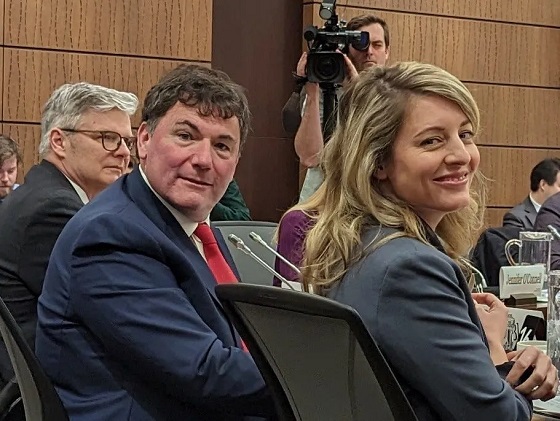
Imagine the relief they’re feeling. Photo from the voluminous PW files
Paul Wells
Hold it now and watch the hoodwink/ As I make you stop, think
Maybe the Americans assume we’re already part of their country because our leaders won’t get off their TV shows. Politico reports that Justin Trudeau’s office called Jen Psaki on Thursday morning and asked whether she’d interview Canada’s prime minister pro tem for her Sunday MSNBC political show. The PMO’s timing was excellent: Psaki was dropping a kid off at school, so she had excess childcare capacity at precisely the moment she was being offered quality time with somebody high-maintenance.
Trudeau had a message to deliver about Canada-US relations, and he was eager to deliver it to the seventh highest-rated show on MSNBC. He also paid his regards to Jake Tapper, who gets fully one-fifth the viewers of his Fox competitors.
Trudeau’s message to his tiny bespoke audiences was straightforward: that Donald Trump wants to talk about annexing Canada because he doesn’t want to talk about the economic costs of his own tariff policy. Trump’s advisors were said to be working this week on ways to limit those costs. Talk of costs isn’t guaranteed to change Trump’s mind, but nothing is. I don’t have a secret smarter policy I’m keeping in my back pocket; the situation is what it is. Danielle Smith went to Mar-a-Lago — a gambit as legitimate as Trudeau’s visit or anybody else’s — but didn’t come away sounding confident that she’d had better results than anyone else.
Even Stephen Harper — also appearing on a U.S. podcast — sounded worried and perplexed by Trump’s thinking. Still, Canada’s last Conservative prime minister delivered a rebuttal of Trump that was orders of magnitude more on-topic and specific than anything we’ve yet heard from the next Conservative prime minister. There’s playing tough, and then there’s being tough.
Today (Jan 14) is the last day to subscribe to this newsletter at my original rate of $5 a month or $50 a year. Tomorrow the rate goes up to $8 a month/ $80 a year. Anyone who subscribes at the lower rate will remain locked in at that rate for as long as they remain a subscriber.
Trudeau will do what he does until the Liberals select his successor. His itinerary for Tuesday says “No public events scheduled,” yet again. If he has any particular message for Canadians at T2 Minus Six Days, he is in no hurry to deliver it. I think something in him broke after the Toronto—St. Paul’s by-election defeat at the end of June. Sure, he’s talked to Mark Critch and the hot-sauce guy in Quebec. But the fight was out of him long before he made it official. The impulse in almost any politician to tell you exactly what they’re up to — the yearning François-Philippe Champagne has at triple strength — it’s all but vanished from Trudeau for months now. I don’t think it’s because he’s decided to resign. I think if he had managed to stare down his Liberal critics over the holidays, if he still had one more campaign ahead of him, he’d still basically be waiting. In that alternate universe, waiting for the voters to deliver their verdict.
Instead Trudeau let his party’s late-blooming internal opposition win, and now the Liberals are having a bad time of it. I have to assume that in some corner of his psyche, he enjoys seeing them squirm. All he wanted to do was receive the voters’ judgment. There would have been grim realism in letting him. But the Liberal caucus, docile in October, panicked and bolted in December after Chrystia Freeland quit. So now they get to come up with a better idea.
By 2021 or so, the people who’d left the Trudeau government started to look like a better cabinet than the ones who’d stayed. Similarly, a lot of the talent in the emerging Liberal leadership race is in the people who are sitting it out: Dominic LeBlanc, Anita Anand, Champagne, Mélanie Joly if you like. Steve MacKinnon would have been interesting to watch as an underdog. He speaks both official languages better than most MPs speak either, and after an early defeat in 2011, he reacted in the old-fashioned way: by figuring out how to get better at politics. Oh well.
Does anybody doubt the crew who aren’t running for the leadership will have a more pleasant 2025 than Mark Carney, Chrystia Freeland, Christy Clark, Karina Gould, Chandra Arya and That Other Guy? Frenzied parallel campaigns to raise money and recruit supporters. Gigantic questions they’d rather avoid. Party horse-race polls that have exited the realm of arithmetic and turned into Escher drawings. And waiting just over the horizon, cracking their knuckles: the voters of Canada.
Realistically it’ll come down to Freeland and Carney, if they both run. A study in contrasts: she’s from Alberta but couldn’t save her former chief of staff who ran in the riding next to Freeland’s last June. He’s from Alberta but has been flirting with electoral politics since the Obama presidency. “I’ve just started thinking about it,” Carney told Jon Stewart, whose return has driven The Daily Show to fully 40% of Colbert’s ratings. Just started thinking about it? Where’s he been all his life?
I wasn’t kidding, not one tiny bit, when I wrote last week that the least Carney can do is cough up the task force report on the economy that his party’s current leader commissioned from him four months ago. This should not seem like a clever gotcha from one of our nation’s premier snarky pundits. It should be obvious that serious people finish a job, and that the best measure of Carney’s insight and instincts is the work he was theoretically already doing when things got weird.
An obvious question for Freeland is why the Nanos polling spread between Liberals and Conservatives is seven points wider than it was the day before she left the cabinet. Another is whether the “costly political gimmicks” in the Fall Economic Statement she declined to deliver were the first she’d seen.
They’ve both done great things. Carney was appointed to run two central banks by two Conservative prime ministers, neither of whom ever had a word of criticism for his work. He delivered the smoothest possible Brexit even though he hated the idea. Freeland basically picked the Trudeau government up from the wrong side of relations with Russia and dropped it on the right side. Neither needs my permission to march into the history books. But if you think either is a natural political talent, you’ll find the next couple of months hard to watch.
Maybe one of the Liberal candidates will develop the habit of answering questions when asked. It would have the virtue of novelty. It worked well for Harper on that American podcast. Pierre Poilievre is still pivoting to message. Last week he was asked why Elon Musk seems to like him. “If I ever get a chance to meet Musk, I would say, how do we make this an economy where we bring home hundreds of billions of dollars of investment to Canada?” Smooth. Except Musk makes no secret of his answer: ban union labour. Which fits poorly with some of Poilievre’s pro-union marketing.
Two years ago three of Poilievre’s MPs met with Christine Anderson, a German eurodeputy from the AfD party. Poilievre called her views “vile” and said they “have no place in Canada.” Musk has been campaigning nearly full-time for Anderson’s party in German legislative elections.
I’m not trying to pin AfD’s politics on Poilievre. I’m just pointing out that once he no longer has Trudeau to kick around, the internal contradictions in Poilievre’s positions will become harder to ignore.
This week Jenni Byrne, Poilievre’s lead gatekeeper, came in for criticism when she criticized Erin O’Toole for saying nice things about Anita Anand. “For anyone unsure why Erin is no longer leader of the Conservative Party…. [Anand] supported DEI [diversity, equity and inclusion] policies like name, rank and pronouns. Tampons in men’s rooms, etc.” Much of the criticism amounts to dismay that Byrne could be so mean. I could hardly care less. But I do wonder where Byrne expects Canadian soldiers to fight, and alongside whom. Here’s a story on pronoun use in the U.S. Navy and Marines. Here’s one on the UK’s Ministry of Defence offering pronoun guidance while Boris Johnson was prime minister. Here’s NATO’s gender-inclusive language manual. When congratulating oneself on preferring a warrior culture to woke culture, it’s handy to have the first clue what’s going on in other warrior cultures.
Mostly I wonder how anyone could look at a Navy [UPDATE: That should read “Air Force” — pw] veteran congratulating a former Minister of Defence and think, before anything else, “But the tampons!” Poland, and Elon Musk’s friend Donald Trump, want member states in the woke NATO alliance to spend five percent of GDP on national defence. All of the Liberals and all of the Conservatives in all of Canada’s little schoolyard arguments have never come up with a plan to get to two. I know we all get excited about our little feuds, but after an election comes, whoever wins will have to provide real government for a real country in a real world. That’s harder than tweeting.
espionage
Carney Floor Crossing Raises Counterintelligence Questions aimed at China, Former Senior Mountie Argues
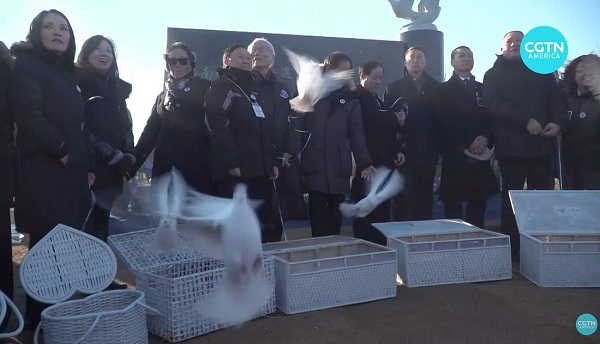
Michael Ma has recently attended events with Chinese consulate officials, leaders of a group called CTCCO, and the Toronto “Hongmen,” where diaspora community leaders and Chinese diplomats advocated Beijing’s push to subordinate Taiwan. These same entities have also appeared alongside Canadian politicians at a “Nanjing” memorial in Toronto.
By Garry Clement
Michael Ma’s meeting with consulate-linked officials proves no wrongdoing—but, Garry Clement writes, the timing and optics highlight vulnerabilities Canada still refuses to treat as a security issue.
I spent years in the Royal Canadian Mounted Police learning a simple rule. You assess risk based on capability, intent, and opportunity — not on hope or assumptions. When those three factors align, ignoring them is negligence.
That framework applies directly to Canada’s relationship with the People’s Republic of China — and to recent political events that deserve far more scrutiny than they have received.
Michael Ma’s crossover to the Liberal Party may be completely legitimate, although numerous observers have noted oddities in the timing, messaging, and execution surrounding Ma’s move, which brings Mark Carney within one seat of majority rule.
There is no evidence of wrongdoing.
But from a law enforcement and national security perspective, that is beside the point. Counterintelligence is not about proving guilt after the fact; it is about identifying vulnerabilities before damage is done — and about recognizing when a situation creates avoidable exposure in a known threat environment.
A constellation of ties and public appearances — reported by The Bureau and the National Post — has fueled questions about Ma’s China-facing judgment and vetting. Those reports describe his engagement with a Chinese-Canadian Conservative network that intervened in party leadership politics by urging Erin O’Toole to resign for his “anti-China” stance after 2021 and later calling for Pierre Poilievre’s ouster — while advancing Beijing-aligned framing on key Canada–China disputes.
The National Post has also reported that critics point to Ma’s pro-Beijing community endorsement during his campaign, and his appearance at a Toronto dinner for the Chinese Freemasons — where consular officials used the forum to promote Beijing’s “reunification” agenda for Taiwan. Ma reportedly offered greetings and praised the organization, but did not indicate support for annexation.
Open-source records also show that the same Toronto Chinese Freemasons and leaders Ma has met from a group called CTCCO sponsored and supported Ontario’s “Nanjing Massacre Commemorative Day” initiative (Bill 79) — a campaign celebrated in Chinese state and Party-aligned media, alongside public praise from PRC consular officials in Canada.
China Daily reported in 2018 that the Nanjing memorial was jointly sponsored by CTCCO and the Chinese Freemasons of Canada (Toronto), supported by more than $180,000 in community donations.
Photos show that PRC consular officials and Toronto politicians appeared at related Nanjing memorial ceremonies, including Zhao Wei, the alleged undercover Chinese intelligence agent later expelled from Canada after The Globe and Mail exposed Zhao’s alleged targeting of Conservative MP Michael Chong and his family in Hong Kong.
The fact that Michael Ma recently met with some of the controversial pro-Beijing community figures and organizations described above — including leaders from the Hongmen ecosystem and the CTCCO — does not prove any nefarious intent in either his Conservative candidacy or his decision to cross the floor to Mark Carney.
But it does demonstrate something Ottawa keeps avoiding: the PRC’s influence work is often conducted in plain sight, through community-facing institutions, elite access, and “normal” relationship networks — the very channels that create leverage, deniability, and political pressure over time.
Canada’s intelligence community has been clear.
The Canadian Security Intelligence Service has repeatedly identified the People’s Republic of China as the most active and persistent foreign interference threat facing Canada. These warnings are not abstract. They are rooted in investigations, human intelligence, and allied reporting shared across the Five Eyes intelligence alliance.
At the center of Beijing’s approach is the United Front Work Department — a Chinese Communist Party entity tasked with influencing foreign political systems, cultivating elites, and shaping narratives abroad. In policing terms, it functions as an influence and access network: operating legally where possible, covertly where necessary, and always in service of the Party’s strategic objectives.
What differentiates the People’s Republic of China from most foreign actors is legal compulsion.
Under China’s National Intelligence Law, Chinese citizens and organizations can be compelled to support state intelligence work and to keep that cooperation secret. In practical terms, that creates an inherent vulnerability for democratic societies: coercive leverage — applied through family, travel, business interests, community pressure, and fear.
This does not mean Chinese-Canadians are suspect.
Quite the opposite — many are targets of intimidation themselves. But it does mean the Chinese Communist Party has a mechanism to exert pressure in ways democratic states do not. Ignoring that fact is not tolerance; it is a failure to understand the threat environment.
In the RCMP, we were trained to recognize that foreign interference rarely announces itself. It operates through relationships, access, favors, timing, and silence. It does not require ideological agreement — only opportunity and leverage.
That is why transparency matters. When political figures engage with representatives of an authoritarian state known for interference operations, the burden is not on the public to “prove” concern is justified. The burden is on officials to explain why there is none — and to demonstrate that basic safeguards are in place.
Canada’s allies have already internalized this reality. Australia, the United States, and the United Kingdom have all publicly acknowledged and legislated against People’s Republic of China political interference. Their assessments mirror ours. Their conclusions are the same.
In the United States, the Linda Sun case — covered by The Bureau — illustrates, in the U.S. government’s telling, how United Front–style influence can be both deniable and effective: built through diaspora-facing proxies, insider access, and relationship networks that rarely look like classic espionage until the damage is done.
And this is not a niche concern.
Think tanks in both the United States and Canada — as well as allied research communities in the United Kingdom and Europe — have documented the scale and persistence of these political-influence ecosystems. Nicholas Eftimiades, an associate professor at Penn State and a former senior National Security Agency analyst, has estimated multiple hundreds of such entities are active in the United States. How many operate in Canada is the question Ottawa still refuses to treat with urgency — and, if an upcoming U.S. report is any indication, the answer may be staggering.
Canada’s hesitation to address United Front networks is not due to lack of information. It is due to lack of resolve.
From a law enforcement perspective, this is troubling. You do not wait for a successful compromise before tightening security. You act when the indicators are present — especially when your own intelligence agencies are sounding the alarm.
National security is not ideological. It is practical.
The Bureau is a reader-supported publication.
To receive new posts and support my work, consider becoming a free or paid subscriber.
International
Ottawa is still dodging the China interference threat
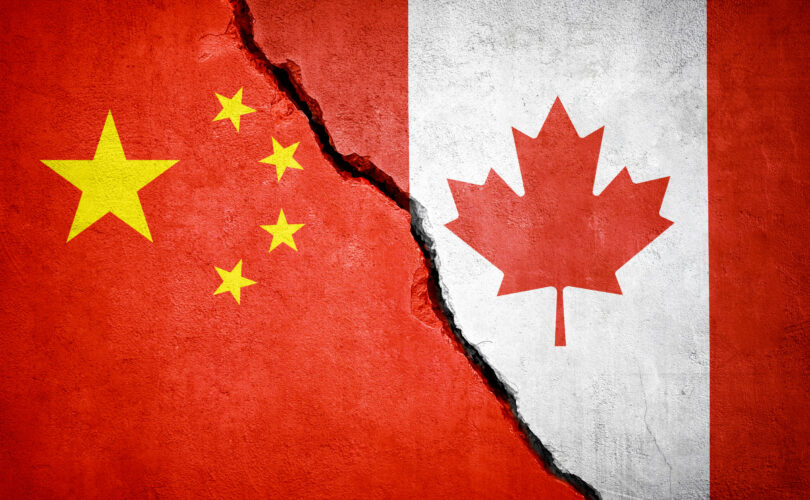
This article supplied by Troy Media.
 By Lee Harding
By Lee Harding
Clement even called the Chinese government “the largest transnational organized crime group in the history of the world.”
Alarming claims out of P.E.I. point to deep foreign interference, and the federal government keeps stalling. Why?
Explosive new allegations of Chinese interference in Prince Edward Island show Canada’s institutions may already be compromised and Ottawa has been slow to respond.
The revelations came out in August in a book entitled “Canada Under Siege: How PEI Became a Forward Operating Base for the Chinese Communist Party.” It was co-authored by former national director of the RCMP’s proceeds of crime program Garry Clement, who conducted an investigation with CSIS intelligence officer Michel Juneau-Katsuya.
In a press conference in Ottawa on Oct. 8, Clement referred to millions of dollars in cash transactions, suspicious land transfers and a network of corporations that resembled organized crime structures. Taken together, these details point to a vulnerability in Canada’s immigration and financial systems that appears far deeper than most Canadians have been told.
P.E.I.’s Provincial Nominee Program allows provinces to recommend immigrants for permanent residence based on local economic needs. It seems the program was exploited by wealthy applicants linked to Beijing to gain permanent residence in exchange for investments that often never materialized. It was all part of “money laundering, corruption, and elite capture at the highest levels.”
Hundreds of thousands of dollars came in crisp hundred-dollar bills on given weekends, amounting to millions over time. A monastery called Blessed Wisdom had set up a network of “corporations, land transfers, land flips, and citizens being paid under the table, cash for residences and property,” as was often done by organized crime.
Clement even called the Chinese government “the largest transnational organized crime group in the history of the world.” If true, the allegation raises an obvious question: how much of this activity has gone unnoticed or unchallenged by Canadian authorities, and why?
Dean Baxendale, CEO of the China Democracy Fund and Optimum Publishing International, published the book after five years of investigations.
“We followed the money, we followed the networks, and we followed the silence,” Baxendale said. “What we found were clear signs of elite capture, failed oversight and infiltration of Canadian institutions and political parties at the municipal, provincial and federal levels by actors aligned with the Chinese Communist Party’s United Front Work Department, the Ministry of State Security. In some cases, political donations have come from members of organized crime groups in our country and have certainly influenced political decision making over the years.”
For readers unfamiliar with them, the United Front Work Department is a Chinese Communist Party organization responsible for influence operations abroad, while the Ministry of State Security is China’s main civilian intelligence agency. Their involvement underscores the gravity of the allegations.
It is a troubling picture. Perhaps the reason Canada seems less and less like a democracy is that it has been compromised by foreign actors. And that same compromise appears to be hindering concrete actions in response.
One example Baxendale highlighted involved a PEI hotel. “We explore how a PEI hotel housed over 500 Chinese nationals, all allegedly trying to reclaim their $25,000 residency deposits, but who used a single hotel as their home address. The owner was charged by the CBSA, only to have the trial shut down by the federal government itself,” he said. The case became a key test of whether Canadian authorities were willing to pursue foreign interference through the courts.
The press conference came 476 days after Bill C-70 was passed to address foreign interference. The bill included the creation of Canada’s first foreign agent registry. Former MP Kevin Vuong rightly asked why the registry had not been authorized by cabinet. The delay raises doubts about Ottawa’s willingness to confront the problem directly.
“Why? What’s the reason for the delay?” Vuong asked.
Macdonald-Laurier Institute foreign policy director Christopher Coates called the revelations “beyond concerning” and warned, “The failures to adequately address our national security challenges threaten Canada’s relations with allies, impacting economic security and national prosperity.”
Former solicitor general of Canada and Prince Edward Island MP Wayne Easter called for a national inquiry into Beijing’s interference operations.
“There’s only one real way to get to the bottom of what is happening, and that would be a federal public inquiry,” Easter said. “We need a federal public inquiry that can subpoena witnesses, can trace bank accounts, can bring in people internationally, to get to the bottom of this issue.”
Baxendale called for “transparency, national scrutiny, and most of all for Canadians to wake up to the subtle siege under way.” This includes implementing a foreign influence transparency commissioner and a federal registry of beneficial owners.
If corruption runs as deeply as alleged, who will have the political will to properly respond? It will take more whistleblowers, changes in government and an insistent public to bring accountability. Without sustained pressure, the system that allowed these failures may also prevent their correction.
Lee Harding is a research fellow for the Frontier Centre for Public Policy.
Troy Media empowers Canadian community news outlets by providing independent, insightful analysis and commentary. Our mission is to support local media in helping Canadians stay informed and engaged by delivering reliable content that strengthens community connections and deepens understanding across the country.
-

 Crime2 days ago
Crime2 days agoBrown University shooter dead of apparent self-inflicted gunshot wound
-

 Health1 day ago
Health1 day agoRFK Jr reversing Biden-era policies on gender transition care for minors
-

 Business2 days ago
Business2 days agoTrump signs order reclassifying marijuana as Schedule III drug
-
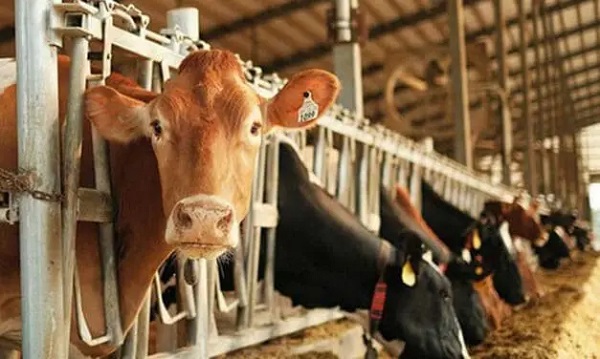
 Agriculture2 days ago
Agriculture2 days agoWhy is Canada paying for dairy ‘losses’ during a boom?
-
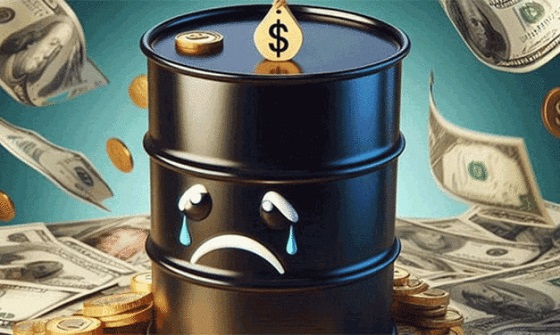
 Business12 hours ago
Business12 hours agoGeopolitics no longer drives oil prices the way it used to
-

 Alberta2 days ago
Alberta2 days agoHousing in Calgary and Edmonton remains expensive but more affordable than other cities
-

 Censorship Industrial Complex1 day ago
Censorship Industrial Complex1 day agoTop constitutional lawyer warns against Liberal bills that could turn Canada into ‘police state’
-
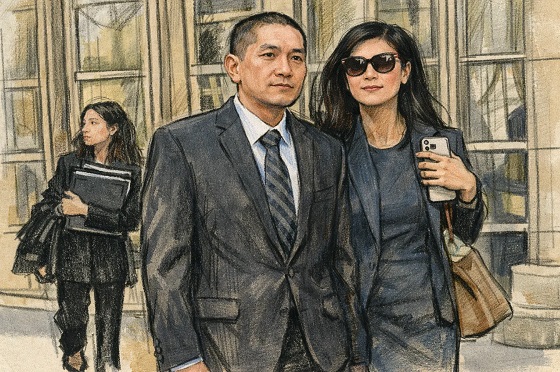
 Business11 hours ago
Business11 hours agoDeadlocked Jury Zeroes In on Alleged US$40 Million PPE Fraud in Linda Sun PRC Influence Case











